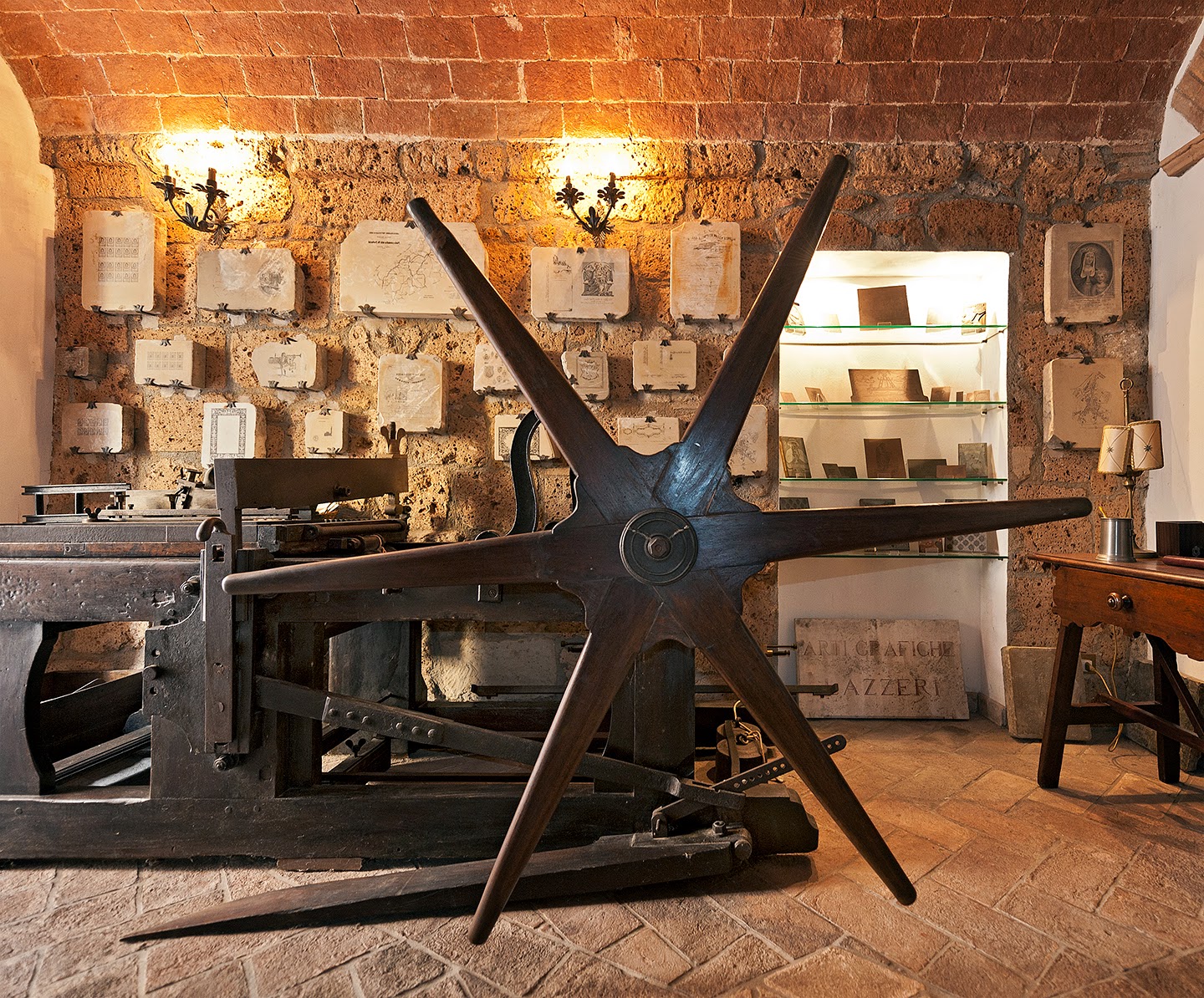 |
| Castello di Proceno from the town hall |
Last week
after a stop to see the Archives in Acquapendente (more in a future post), we drove
further along the Via Cassia connecting Rome to Siena and Florence to the
hilltop town of Proceno which
straddles the border separating Lazio and
the former Papal States from Tuscany.
Nearby is the
old customs house of Centeno (cento=100 miles from Rome ) where travelers including Galileo
(in 1648) and Nathaniel Hawthorne (in 1845) underwent quarantine and had
their bags searched for anti-Papal literature.
At the hour
of our arrival, Proceno was deserted except for
a butcher’s cat but the town hall -Palazzo Sforza - was open to the
breezes and offered sweeping views over the
town’s cotto tile rooftops, the Paglia river valley below and the neighboring hilltowns
of Radicofani (in Tuscany) and Torre Alfina, famous for
artiginal gelato.
There was a
distinct difference of temperature inside the Castello thanks to the brick floors and thick walls.
We
were welcomed by owners Giovanni and Cecilia Cecchini Bisoni, and their two dogs.
 |
| with Cecilia and Giovanni |
 |
| the castle dogs are named after Roman gods |
The entrance hall houses an antique printing
press (torchio) and many other interesting implements
once used in the Cecchini family’s printing business in Siena.
Giovanni
and Cecilia open their castle to
visitors who stay in comfortable self catered apartments, take
cooking classes and enjoy the area’s fine wines at the castle’s Enoteca.
The castle is also a resort, for in the lower gardens guests may enjoy the marvelous swimming pool and restaurant serving top level cuisine and wines.
The castle is also a resort, for in the lower gardens guests may enjoy the marvelous swimming pool and restaurant serving top level cuisine and wines.
 |
| cooking in the castle kitchen |
Spring and summer bring
visitors from around the world who come to enjoy the pleasures of living in a castle plus local people who come to enjoy the well known concert series.
You can find out more about the area of Proceno, Onano and Centeno and it's remarkable Irish connections in my books about the area, which are available also at the Castello di Proceno.
These wonderful places in central Italy are too special to keep secret, so share your knowledge with friends using the Facebook and Twitter icons below.
Please leave a comment below and let me know if you would like to join me in visiting other historic homes, castles and palazzi in central Italy.
Other castles we visit often are : this one in Mugnano, near Bomarzo and that of Vignanello.
You can find out more about the area of Proceno, Onano and Centeno and it's remarkable Irish connections in my books about the area, which are available also at the Castello di Proceno.
These wonderful places in central Italy are too special to keep secret, so share your knowledge with friends using the Facebook and Twitter icons below.
Please leave a comment below and let me know if you would like to join me in visiting other historic homes, castles and palazzi in central Italy.
Other castles we visit often are : this one in Mugnano, near Bomarzo and that of Vignanello.























